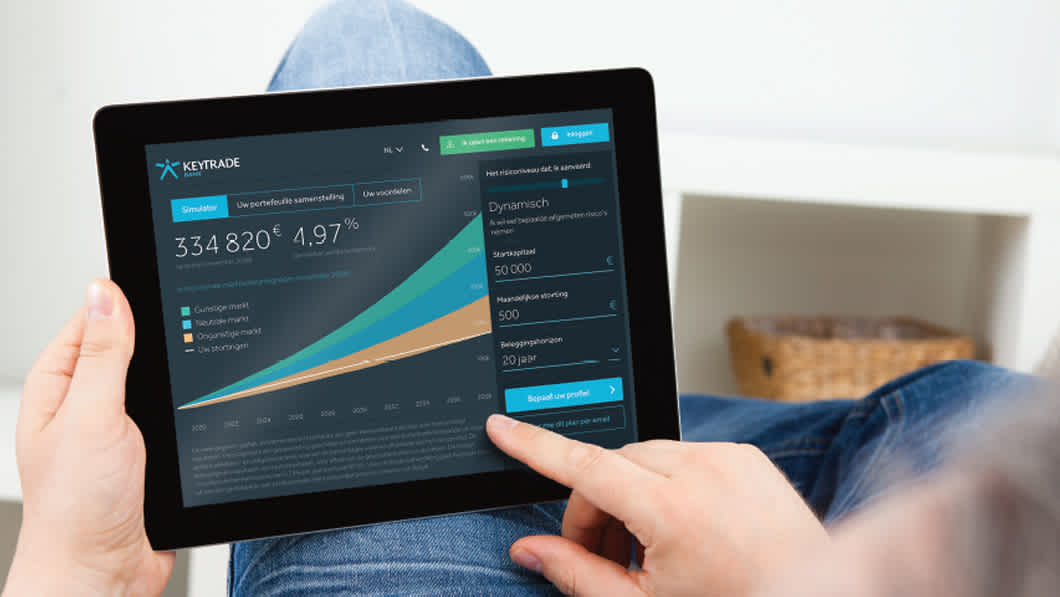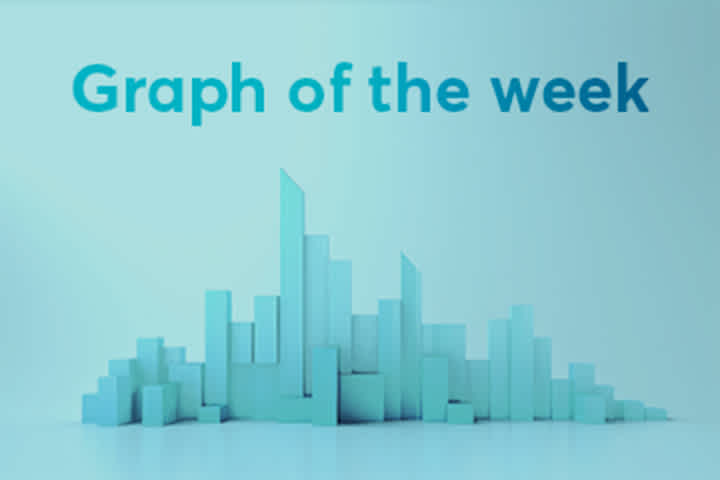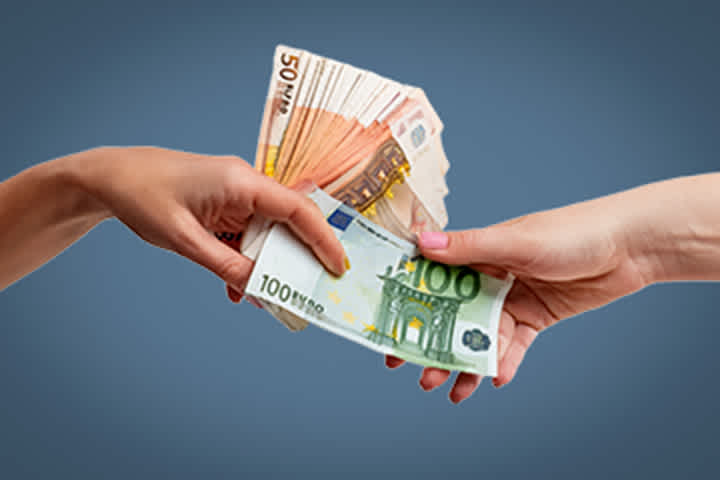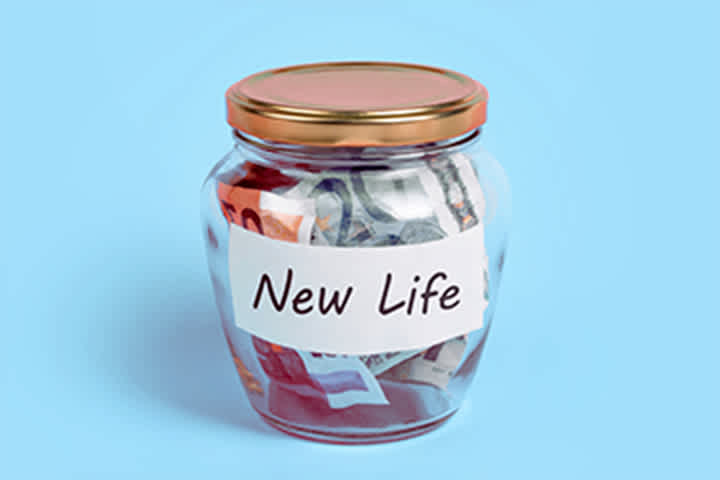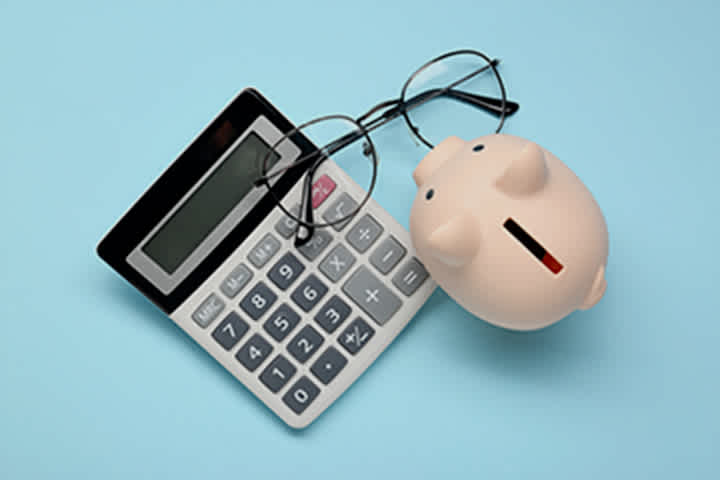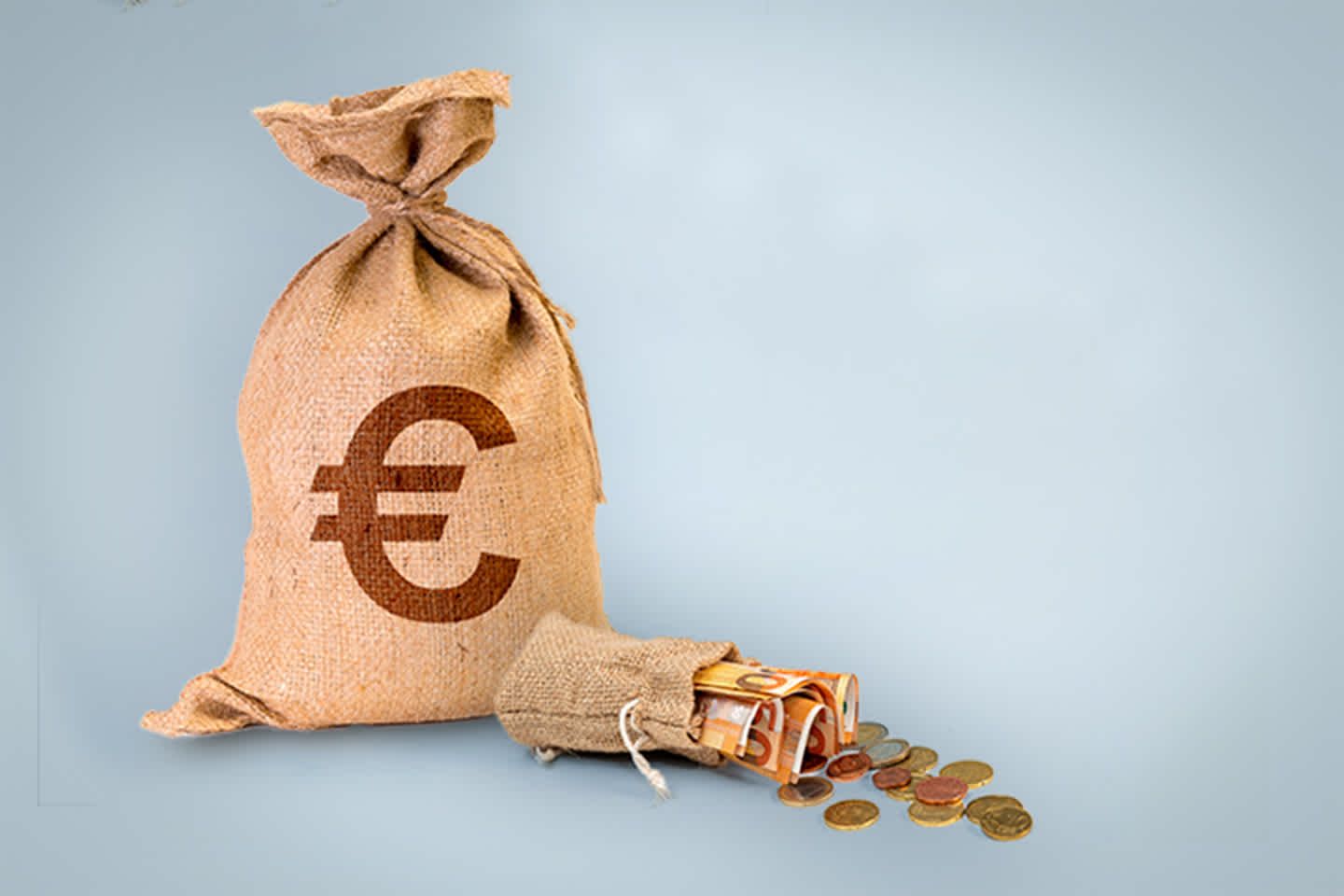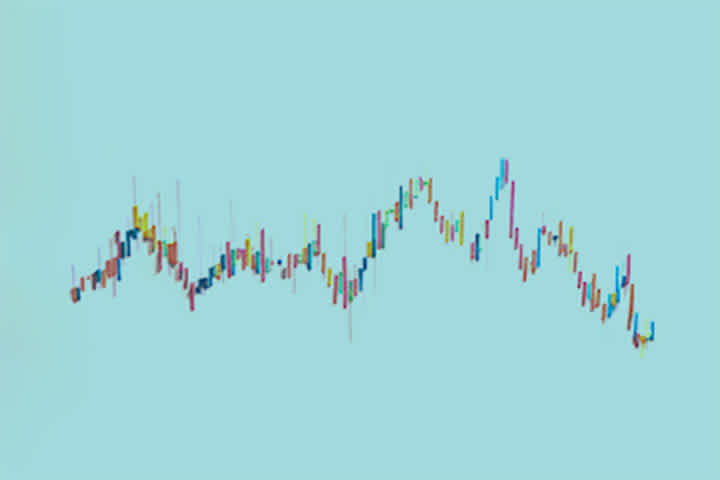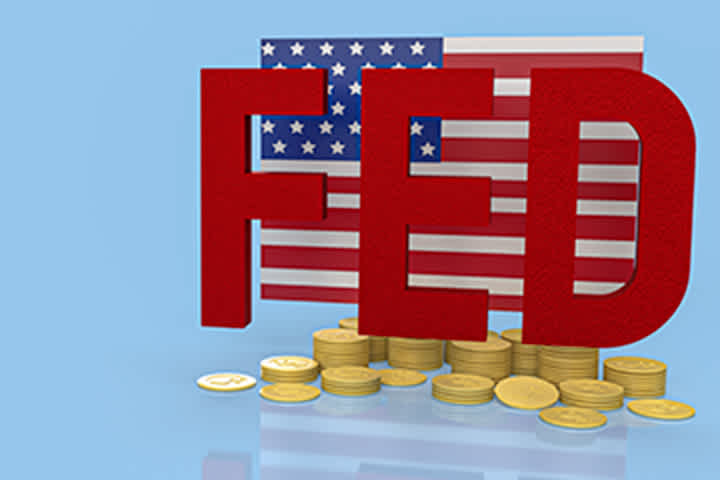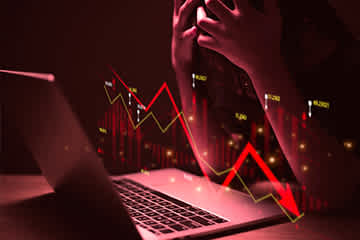What you need to know before you start dividend investing
Keytrade Bank
keytradebank.be
January 15, 2025
3 minutes to read
Getting a dividend feels like a gift. But who is paying for it? Discover why dividends can be both a blessing and a curse.
Back in 1610, the Dutch East India Company was the first company in the world to distribute dividends on its shares. Companies use dividends to share some of their profits with their shareholders. Historically, dividends have therefore been an important part of investors' total return.
Since 1930, 4% of the average annual return in the S&P 500 has come from dividends, in addition to the growth of the share prices themselves (6.08%). In recent years, this dividend flow has dried up somewhat. Today, an S&P 500 distribution tracker such as the iShares Core S&P 500 UCITS ETF USD (Dist) allows you to achieve a gross dividend yield of just 1% (as at December 2024).
In Europe, the average annual dividend yield is traditionally higher than in the US. A STOXX Europe 600 tracker such as the iShares STOXX Europe 600 UCITS ETF (Dist) currently allows you to achieve a gross dividend yield of around 2.75% (as at December 2024). From Proximus to Cofinimmo, Elia and Colruyt: there are also many dividend shares to be found on the Belgian stock market.
The reason for the difference between Europe and the US is quite simple. In recent decades, companies in the US have tended to use their profits to buy back and destroy their own shares to add value for shareholders. Tech companies are also becoming an increasingly dominant component of the US stock market indices. Many of these (growth) companies distribute no dividends or only limited dividends.
The sense and nonsense of dividends
Dividends may seem like a nice source of additional income at first but not everyone is a fan. It is still a subject that many investors disagree on, and for good reason.
On the one hand, dividends have clear benefits. When big names such as Meta Platforms and Alphabet distributed a dividend for the first time in 2024, this was praised as a positive step, a sign of maturity. The same goes for news reports of dividend increases, which are often seen as a sign of financial health and increasing profitability. A dividend growth strategy – investing in companies that systematically increase their dividends – appeals to many investors. In addition, dividend shares are often seen as a defensive investment, especially in times of economic uncertainty.
On the other hand, there are also critical voices. Dividends are sometimes seen as an inefficient way for companies to return capital to their shareholders, capital that should be reinvested or accumulated for more difficult times ahead. And because dividends are taxed, some investors prefer companies to keep that money and put it to work for them.
These mixed messages mean that investors don't always know what to do as far as dividends are concerned. Are they a stable source of income and a sign of sound management? Or an inefficient way to add value for shareholders?
What to look out for as a dividend investor
If you are already a dividend investor or would like to invest more in dividend shares, make sure to bear in mind these risks and points to consider:
1. The dividend trap
A common misconception is that dividends are an additional gain on top of a share's price gain. This is called the dividend trap. When a company distributes a dividend, the stock price tends to be adjusted by the distributed amount. This means that although you received a dividend, the value of your share decreases by a similar amount. The total return therefore remains the same. Some investors, however, think that the dividend is more like a bonus.
Another misconception is that dividend-paying shares are always less volatile due to the regular distributions. Although dividend-paying companies are often stable and mature companies, they are still affected by market fluctuations. It is the usually more defensive nature of the companies issuing these shares that dampens volatility, not the dividend itself.
2. Dividend traps: too good to be true
High dividend yields may initially seem attractive but they can also be a warning signal, particularly if you only look at the dividend yield. If company A offers a 4% dividend yield, and company B offers a 7% dividend yield, the next logical step seems to be that you go for company B. It can indeed be a better purchase but it can also be a dividend trap.
An extremely high dividend yield is often achieved when a company’s share price has fallen sharply. This is often an indication of fundamental problems, such as declining revenues or operational challenges. Some companies even use all their distributable profits to pay dividends, which leaves very little room for contingencies. Investors who rely blindly on a high dividend yield run the risk of falling into a dividend trap.
These dividend traps may ultimately lead to dividend cuts or even cancellations, which will further push down the share price. It is therefore crucial to look beyond dividend yields and always consider the bigger picture. Investigate the company's health, the stability of the sector and the sustainability of the dividend strategy. A healthy balance between efficiency and quality is essential.
3. Overconcentration in certain sectors
The ultimate objective of investing is to maximise the total return, which consists of capital gains and possible dividends. However, too much focus on dividends may lead to missed opportunities in sectors with high growth potential. Tech companies often pay little or no dividends but offer significant value growth. The strong growth of such companies, which (for a long time) were not distributing any dividends, has been the driving force behind the returns of broader markets in recent years. Investors focusing exclusively on dividends run the risk of missing out on value creation in such sectors.
Focusing too much on dividend income may mean that through overconcentration of investors' portfolios in typical dividend sectors such as utilities or consumer goods, they miss opportunities in dynamic markets. Some sectors, such as defence, fossil fuels and tobacco, are traditionally known for their attractive dividends. These sectors often distribute a large portion of their profits to shareholders. However, this can present a dilemma to investors with a strong focus on sustainability.
4. Tax implications
Dividends are taxed. Belgian dividends are subject to a 30% withholding tax. Anyone receiving dividends from foreign companies is taxed twice: foreign withholding tax and Belgian withholding tax! This can reduce the final dividend by as much as half.
If there is a double taxation treaty between Belgium and the country of origin, a lower withholding tax can be achieved. This depends on several factors such as your tax residence. Good to know: you can recover the withholding tax on dividends to a certain extent through your personal income tax. However, you have to do this yourself. The tax authorities will not calculate this for you*.
*If you want more info on your situation, be sure to contact our Federal Public Service Finance or your tax advisor.
If you want to invest in dividend shares but don't need a regular income, consider investing in an ETF or actively managed fund that reinvests its profits (accumulation) rather than issue them as dividends (distribution). In case of reinvestment, the dividends are settled with the ETF price or the net asset value of the fund. You can find these trackers or funds by searching for the terms “income” or “dividend”. Please note that you should choose accumulation (Acc) rather than distribution (Dis). More information on this is always available in the Key Information Document. Accumulation can be more attractive for tax purposes: because you are not receiving any dividends, you will not pay any withholding tax.
5. Higher dependence on dividends
Too much focus on dividends may ultimately lead you to depend on this source of income. In economically difficult times, companies are likely to reduce or eliminate their dividends, which may cause financial stress for investors relying heavily on dividend income. Of course, you can still sell some of your shares yourself from time to time. This can also be a strategy to provide a regular income if you need it.
Want to start dividend investing?
Other articles that might interest you
![iPad]()
Monthly video 2025
![GraphOfTheWeek]()
Defensive shares as a buffer?
![GraphOfTheWeek]()
US shares no longer number one!
![blogHeader-renov]()
Investing in your partner’s home? Don’t make these mistakes!
![blogHeader-GeldLenen]()
Lending money to family or friends: do you have carte blanche?
![iPad]()
Monthly video 2024
![blog-ouderKoppel]()
40 years of pension savings: what will you spend it on (literally)?
![blog-AstroMars]()
From FOMO to ZERO bank account? 5x pension savings to the rescue
![pension pilars]()
Start growing your pension sooner rather than later
![blogHeader-bestchoicesP]()
Pension savings returns: these choices give the maximum payout
![blogHeader-VrouwenPensi]()
Why pension planning is even more important for women
![blogHeader-americaFirst]()
United States 1, Everyone Else 0
![blogHeader-1KeerBeleg]()
Lump-sum investing vs cost averaging: which offers the highest return?
![Newspaper with ETF's circled in red, a red pen and a magnifying glass on top]()
What is a tracker and how do you choose the right one?
![blogHeader-TypeBeleger]()
What type of investor are you? Take the quiz
![blog-EpargeEnfant]()
How can you teach your child to save? 12 tips
![GraphOfTheWeek]()
A potential worldwide trade war is claiming European victims
![blogHeader-animals]()
Ever thought of investing in the pet industry?
![GraphOfTheWeek]()
Have long-term interest rates once again started a 40-year uptrend?
![GraphOfTheWeek]()
Graph of the Week: Magnificent 7 vs 2000s Tech Bubble
![blog-volatility]()
5 mistakes investors make in volatile markets
![termijnrekening]()
Government bonds, savings accounts, or term accounts: which should you choose?
![house-flipping 330509387]()
House flipping: is it worthwhile?
![vix 1827107540]()
Investing in dividend shares: what to look for?
![blog-dividentenRe]()
Why high dividend yields can be a poisoned chalice
![blogHeader-WeinigTijd]()
3 ways to invest when you don't have much time.
![blogHeader-fondsKiezen]()
How do you select an investment fund for your child?
![blogHeader-SparenVoorKi]()
How can I invest or save better for my child?
![blogHeader-Robotica]()
Robotics: From science fiction to science
![blogHeader-Vastgoedaand]()
Property shares: ripe for a comeback?
![coronablog 1670847745]()
Coronablog by Geert Van Herck: Market Observations
![blogHeader-HogereRendem]()
Is it the right time to invest in bonds?
![blogHeader-PeriodiekBel]()
Have you ever thought about investing for your children?
![blog-tweedeLening]()
Borrowing for a second home: what are your options?
![Blog-VoyageMars]()
How can you invest in space travel?
![blogHeader-ZelfOfLaten]()
Invest yourself or have someone do it for you: do you have to choose?
![tell-tax-man 1044303100]()
What do you have to tell the tax man about your money and investments?
![iPad]()
Monthly video 2023
![myth-sustainable 1059639044]()
Five myths about sustainable investing
![Blog-Viellissement]()
How can you invest in an ageing population?
![panneaux solaires]()
6 reasons why installing solar panels is still worthwhile in 2024
![Blog-Vote]()
How do elections affect the stock market?
![Picture article gold]()
Golden days? Why to invest in gold (or not)
![blog-aLouer-TeHuu]()
Is a buy-to-let property a smart investment?
![emerging markets 2]()
Investing in emerging markets: are investment funds a smarter buy than trackers?
![Watch out, danger's about]()
Watch out, danger's about
![blog-DigitalHerit]()
Will AI replace human investment advisers?
![blog energyInvestment]()
How to invest in the energy transition?
![inde2]()
Is India the new China?
Which sectors should remain overweight following the latest rate hike?
![8 tijdloze regels]()
8 timeless rules for investors
![blog-savingForSak]()
Saving for the sake of saving? Or with a goal in mind?
![blog-PrepareYours]()
How do you prepare financially for a longer life?
![Investors, keep your emotions in check!]()
Investors, keep your emotions in check!
![How natural disasters affect the economy and the markets]()
How natural disasters affect the economy and the markets
![myth-sustainable 1059639044]()
Make an impact with your Keyprivate
![diversification]()
How much diversification is enough for your portfolio?
![intelligent mobility]()
Which investment opportunities are available on the road to smart mobility?
![blog healthcareInvestment]()
A vitamin shot for your investments
![blog waterInvestment]()
Does water earn a place in your portfolio?
![Bonds]()
Bonds to rise in 2023?
![iPad]()
Monthly video 2022
![equity-investors-economic-data 1891162513]()
A recession and yet the markets are going up?!
![something-new-investment-world]()
There's something new in the air in the investment world!
![monetary-policies-brake-stock-market-upturn]()
Is tighter monetary policy acting as a brake on the stock market upturn?
![nervous-stock-market-200days-moving-average 534464629]()
Getting nervous about the stock market? Take a look at the 200-day moving average
![green-investing 1324554443]()
With or without the coronavirus: why green investing remains just as relevant as before
![impact-investment 1820196929]()
Impact investing: sustainable investments with that little bit more
![sustainable-investing 1613013514]()
Sustainable investing: what, why and how?
![inflation 2023622432]()
How can you make an investment portfolio inflation-resistant?
![safe-contactless 1931956346]()
CARD STOP has a new number! 078 170 170
![Geert Van Herck]()
Monthly video 2021
![rising-debt 85866430]()
Five tips for keeping a cool head when the stock market becomes turbulent
![end-year-rally 1310382322]()
How do I choose the right shares?
![math-stock-market 68612446]()
Les plafonds fiscaux pour les années de revenus de 2020 à 2023
![Short selling jenga tower with a hand taking one of the blocks]()
Short selling: what is it and how does it work?
![financial-health 1414013324]()
10 things you can do within a day to improve your financial health
![protect-capital-divorce 1644904228]()
How to protect your capital in the event of a divorce
![timing-is-everything 390959932]()
Timing is everything: how to choose the right time to enter the stock exchange?
![iPad]()
La technologie préserve les investisseurs contre l'utopie
![micro-caps 516415369]()
Why (not) invest in micro-caps?
![rising-debt 85866430]()
Rising debt: is it a problem?
![capitalisation-or-distribution 562383328]()
Funds and trackers: do you opt for capitalisation or distribution?
![invest-not-large 1027895281]()
Can I invest even if I do not have a large sum of money available?
![balance-investment 604545992]()
What do I do to balance my investments?
![share-bank-card 1080072473]()
CARD STOP has a new number! 078 170 170
![megatrend 775242391]()
Always have a megatrend in your portfolio
![lazy-marathon 1620359050]()
The lazy marathon investor
![end-year-rally 1310382322]()
Are we heading into a year-end rally by the stock markets?
![coronablog 1670847745]()
Coronablog de Geert Van Herck: La panique atteint des sommets… énième épisode
![coronablog 1670847745]()
Coronavirus blog by Geert Van Herck: S&P 500 indicates a positive trend
![retirement-pension 2093526529]()
What retirement pension will you get later?
![financial-stress 1740212186]()
How can we cope with financial stress?
![us-dominance 1664904235]()
US stock market dominance not coming to an end yet!
![gold 1680311416]()
Going for gold? Gold is apparently going for it.
![contrarian 1833846373]()
Are you a contrarian investor?
